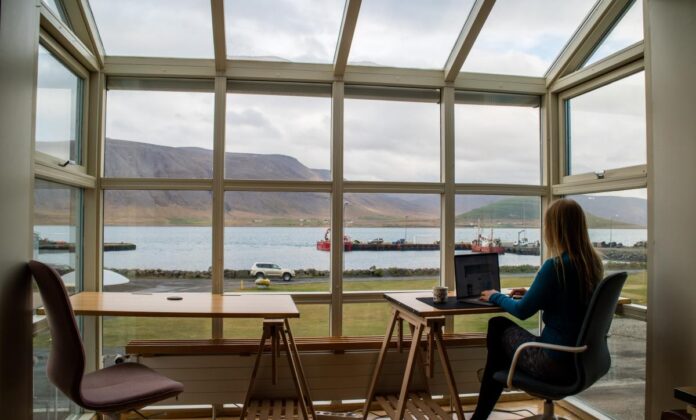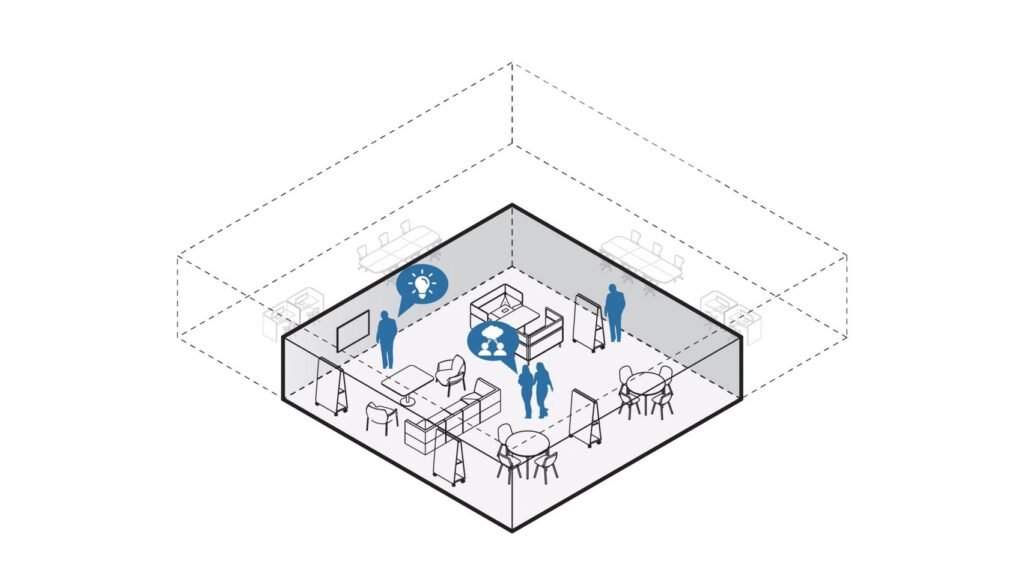Sooner or later many of us will go back to an office. But how will the post pandemic offices space change in the continuing virus era?
So it turns out that we don’t dislike our jobs. In fact, especially right now, a job is a valuable thing. We like tackling challenges, solving problems, innovating, creating and working with others. What many of us don’t like is the office.
We baulk at the mentally – and sometimes physically – crushing commute. And we resent spending our days in bland surroundings divorced from the natural world. We prefer being in a comfortable, personalized space close to family and friends. Home, in other words.
Of course, that may not be the case for everyone. Young people with single rooms in shared apartments; older people with big families – there is certainly a case to be made for the office as a place for concentration, collaboration and even escape.
Nonetheless, new research from McKinsey reveals that in the United States, 80 per cent of people questioned said they enjoyed working from home; while 41 per cent felt they were more productive.
The report considers various approaches to post-COVID-19 working life, but in essence it suggests a mixture of re-thought workspace and more remote working. This could be beneficial to employers as well as employees: “Talent sourcing may become easier, since the pool of available talent could have fewer geographical constraints.”
Creative organizations began considering this almost at the start of the pandemic. During the AdForum Summit in June, Grey’s worldwide CEO Michael Houston said he felt that being physically present at the office five or more days a week might no longer be necessary, while office space could be reduced and replaced by “collaborative spaces”.
But let’s assume offices will still exist. How different will they look? At least while the virus continues to circulate, office design will have to reflect health considerations. Approaches could include “de-densified” open plan spaces, with plenty of social distance between desks, efficient air filtration systems – if open windows are not an option – discreet protective screens and dividers, as well as more greenery to promote peace of mind.
Furniture needs to be light, easy to move and of course easy to sanitize. For companies that want to invest in a healthier environment, there are actually surfaces that kill germs, like the ones made by NanoSeptic, whose “mineral nano-crystals” deliver “a powerful oxidation reaction”. Touch-free and voice technology may also help in the battle to avoid unsafe surfaces.
The magazine Work Design warns against a clinical, hospital-like space, however, saying that “the stark white box” is in fact “the opposite of what office spaces should strive to create”. Instead it suggests materials that create a “warm, inviting feel”. Happily, some of these, such as wood and stone, are naturally anti-microbial.
The architecture firm Woods Bagot has come up with a number of potential office designs. The one that sounds the most fun is called Culture Club: a cross between café and lounge (above), designed purely for meetings, while the bulk of desk work will be done at home. The firm describes it as a “club-like space” for “creative interaction”.
This scenario could even create new roles in the workplace, according to Interior Design. With employees hovering between remote working and dropping into the office, someone will need to keep an eye on all the comings and goings. “A community manager in the workplace should function as the connective tissue for the employees to interact with each other: remote or on-site. The position should function as a service-focused role that brings groups together with the best possible tools.”
Right now, you may not feel like going back to the office. But when you do, the office may feel like a different place.






